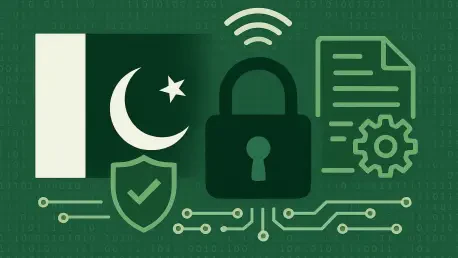In an era where cyber threats are becoming increasingly sophisticated and pervasive, Pakistan has taken a bold step forward to secure its digital landscape with the introduction of the Pakistan Security Standard for Cryptographic and IT Security Devices. This innovative framework is meticulously crafted to protect sensitive data and communications, particularly within critical sectors such as government, defense, and intelligence agencies. As digital vulnerabilities continue to pose significant risks to national security, this policy emerges as a proactive measure to ensure that only rigorously tested and certified technologies are deployed in environments handling classified information. By establishing strict protocols for evaluation, certification, and deployment, Pakistan aims to fortify its defenses against cyber intrusions and data breaches. This article delves into the intricacies of the standard, exploring its evaluation processes, fee structures, security requirements, and its alignment with global norms while fostering local innovation.
Unpacking the Core Framework
Pakistan’s latest cybersecurity initiative represents a comprehensive effort to establish stringent guidelines for cryptographic systems, IT security products, and secure applications. Designed specifically for sectors managing sensitive or classified information, this standard mandates that only thoroughly vetted and authorized technologies can be utilized in critical environments. Beyond merely setting rules, it serves as a strategic blueprint to shield national data from escalating cyber threats. The policy integrates detailed testing methodologies and certification requirements, ensuring that every piece of technology meets high security benchmarks before deployment. This approach not only addresses immediate vulnerabilities but also builds a resilient foundation for long-term digital protection, reflecting a deep commitment to safeguarding the nation’s most vital information assets in an increasingly interconnected world.
The significance of this framework extends to its role as a catalyst for trust in digital infrastructure. By enforcing mandatory certification by a designated authority, it prohibits the use of unverified or uncertified products in government and defense networks. This strict oversight applies to a broad spectrum of technologies, including encryption modules, secure communication tools, and intrusion detection systems. The emphasis on compliance ensures that every device or application used in sensitive sectors is equipped to withstand potential cyber risks. Furthermore, the standard’s focus on protecting classified data underscores its importance in maintaining national sovereignty in the digital realm, positioning Pakistan as a serious contender in the global cybersecurity arena with a policy that prioritizes both security and accountability.
Delving into Evaluation and Timelines
A cornerstone of Pakistan’s new cybersecurity standard is its meticulous evaluation process, tailored to the complexity of the technology under review. For simpler IT security products, a surface-level assessment can be completed in just 15 working days, providing a swift yet effective check on basic functionalities. However, for more intricate systems like proprietary cryptographic algorithms or devices, the process can extend up to six months, involving exhaustive analyses such as source code inspections and cryptanalysis. These evaluations scrutinize critical aspects like cryptographic strength, operational stability, and resistance to tampering or side-channel attacks, ensuring that no vulnerability is overlooked. This tiered approach reflects a commitment to thoroughness, adapting the depth of scrutiny to match the potential risks associated with each technology deployed in sensitive sectors.
The varying timelines for evaluation also highlight the framework’s flexibility in addressing diverse technological needs while maintaining rigorous standards. For instance, secure software applications undergo assessments that range from quick reviews to detailed inspections depending on their complexity, ensuring that even rapidly evolving technologies are adequately vetted. This systematic process not only guarantees the security of individual components but also contributes to the overall integrity of national communication systems. By prioritizing comprehensive testing over expediency in critical cases, the standard mitigates risks of breaches that could compromise classified information. Such a structured timeline framework demonstrates Pakistan’s dedication to balancing efficiency with the imperative of robust cybersecurity, fostering confidence among stakeholders in the reliability of digital tools used in high-stakes environments.
Exploring Certification Costs
Compliance with the new security standard comes with a structured fee system that mirrors the depth of evaluation required for different technologies. At the lower end, basic assessments for secure software applications start at Rs 0.1 million, making initial certifications accessible for simpler systems. In contrast, the evaluation of complex cryptographic devices with proprietary algorithms can cost up to Rs 1.5 million, reflecting the extensive resources and expertise needed for such intricate analyses. These costs are carefully calibrated to cover a wide array of technologies, including firewalls, authentication tokens, and encryption modules, ensuring that the financial aspect aligns with the level of scrutiny. Transparency in pricing allows organizations to anticipate expenses associated with securing their digital assets, promoting informed decision-making in critical sectors.
Additionally, the fee structure accounts for variations in technological complexity by allowing for incremental increases when multiple algorithms or additional security features require testing. This tailored approach ensures fairness, as costs are directly tied to the workload and specialized skills involved in each evaluation. For example, a detailed review of proprietary cryptographic systems, which demands months of intensive analysis, justifies a higher fee due to the sophisticated nature of the task. Such a pricing model not only supports the sustainability of the certification process but also underscores the value placed on securing national data. By linking fees to the intensity of assessments, the framework encourages organizations to prioritize robust security measures, reinforcing the overarching goal of protecting sensitive information from cyber threats in government and defense networks.
Comprehensive Security Approaches
The security standard adopted by Pakistan takes a holistic stance, addressing multiple dimensions to ensure airtight protection of digital assets. Physical security is prioritized through requirements for tamper-proof designs, preventing unauthorized access or manipulation of devices. Software security is equally critical, with mandates for secure coding practices to eliminate exploitable vulnerabilities in applications. Operational security rounds out this approach, incorporating robust key management and incident response mechanisms to maintain system integrity during and after deployment. This multidimensional strategy minimizes risks across the entire lifecycle of a product, from initial implementation to eventual decommissioning, creating a fortified environment where cyber threats face formidable barriers at every level.
Beyond individual components, the standard emphasizes the importance of cohesive security across interconnected systems in sensitive sectors. By integrating physical, software, and operational safeguards, it ensures that no single point of failure can jeopardize national data or communications. For instance, even if a device passes physical tamper-proofing tests, it must also demonstrate resilience against software exploits and have protocols for swift response to breaches. This layered defense mechanism is particularly vital in environments handling classified information, where a single lapse could have far-reaching consequences. The comprehensive nature of these requirements reflects a forward-thinking perspective, aiming to preemptively counter evolving cyber risks and sustain trust in the digital infrastructure of critical institutions over the long term.
Balancing Global Standards with Local Growth
A distinguishing feature of Pakistan’s cybersecurity framework is its alignment with internationally recognized norms, ensuring that its standards are credible and interoperable on a global scale. By adhering to benchmarks such as ISO/IEC 15408 (Common Criteria), FIPS, and NIST guidelines, the policy guarantees that certified technologies can seamlessly integrate with international systems, fostering collaboration and trust. This alignment not only enhances the reliability of Pakistan’s digital defenses but also positions the nation as a responsible player in the global cybersecurity ecosystem. Such compliance is essential for maintaining secure cross-border communications and partnerships, especially in sectors like defense where international cooperation is often necessary.
Simultaneously, the framework champions local innovation by encouraging the development of homegrown cryptographic technologies, reducing dependence on foreign solutions. This dual focus on global integration and national self-reliance reflects a strategic vision to strengthen domestic capabilities while staying connected to worldwide best practices. By nurturing local expertise and technology, Pakistan aims to build a sustainable ecosystem that can address unique national security challenges without compromising on international compatibility. This balance is crucial for long-term resilience, as it empowers the country to adapt global advancements to local contexts, ensuring that its cybersecurity measures are both cutting-edge and culturally relevant to the needs of its critical sectors.
Reflecting on a Secure Digital Future
Looking back, Pakistan’s establishment of the Pakistan Security Standard for Cryptographic and IT Security Devices marked a pivotal moment in bolstering the nation’s digital defenses. The detailed evaluation processes, transparent fee structures, and stringent certification requirements demonstrated a resolute commitment to protecting sensitive data within government, defense, and intelligence sectors. Its alignment with global cybersecurity norms ensured that the framework remained relevant and interoperable, while the push for local innovation laid the groundwork for technological independence. Moving forward, stakeholders should focus on expanding awareness and training programs to support compliance with these standards. Continuous updates to the policy will also be essential to address emerging threats, ensuring that Pakistan’s digital infrastructure remains robust and adaptable in an ever-changing cyber landscape.









